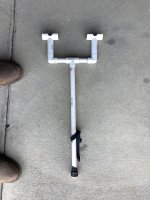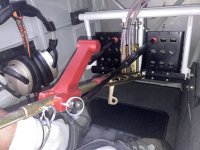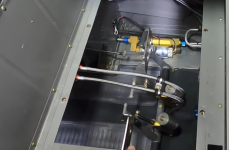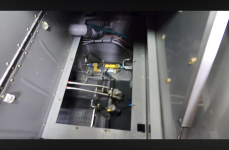Well I didn't install a parking brake and considering where I live (windy Wyoming) I regret it quite often when I have to dig in the back for my chocks and run out of the plane as quickly as I can before it starts getting some roll speed. Not too long ago I was actually found sprinting down the KCOD ramp for about 200yds chasing my tiedown bag; it would inch closer to me, then a gust would come up and say "not today!". Enjoy your new home amongst the sage brush tiny black bag. I'm sure I looked like a real fool that day. haha
Looks like I finally have a summer project.
Something to think about for those of you building.
Looks like I finally have a summer project.
Something to think about for those of you building.








